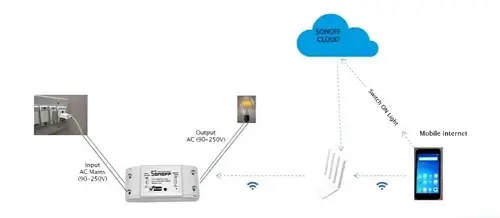Hey there! So, I recently dove headfirst into the world of ESP32, and let me tell ya, it's like discovering a new superpower. Whether you're a tech newbie or a seasoned pro, understanding ESP32's operating modes can feel like unlocking a hidden level in your favorite video game. Remember those times when your Wi-Fi would mysteriously drop, and you'd have to play the router-reboot game? Well, ESP32 is like that magical fix—but on steroids.
So, What Exactly is an ESP32?
Alright, picture this: you've got a tiny chip that's practically bursting with potential. It's like a Swiss Army knife for tech enthusiasts. The ESP32 is a low-cost, low-power system-on-a-chip microcontroller with integrated Wi-Fi and dual-mode Bluetooth. Sounds fancy, right? Think of it as the brain behind a lot of smart devices—your smart lights, thermostats, or even those quirky internet-enabled coffee makers we all pretend to need.
The Diverse Operating Modes
Now, let's chat about these operating modes—it's where the real magic happens. At its core, the ESP32 has three primary modes: Station Mode (STA), Soft Access Point (AP), and Both (STA+AP). Each mode has its unique charm and use case.
- Station Mode (STA): Think of this as your ESP32 being just another device on your home network. It connects to an existing Wi-Fi network so you can send and receive data—pretty straightforward.
- Soft Access Point (AP): This mode transforms your ESP32 into a mini Wi-Fi router. Ever been camping with friends and realized someone's gotta share their hotspot so you can upload those priceless campfire pics? Yeah, the AP mode's kinda like that hero friend.
- STA + AP Mode: If multitasking was an art form, this mode would be Van Gogh. Your ESP32 acts as both a station and an access point simultaneously—talk about double duty!
The Real-Life Scenario
I remember setting up my first ESP32 project for my DIY smart home experiment—cue the nerve-wracking anticipation! I had this wild idea to automate my porch light because who doesn't love arriving home to a perfectly lit pathway? I used Station Mode to connect to my home Wi-Fi, then linked it with Google Home—voilà! My porch light now listens better than my dog during dinner time.
Diving Deeper: How These Modes Work Together
If you’ve ever tried juggling while on roller skates... well, maybe don’t try that at home. But imagine doing just that; it’s kind of how these modes function together in STA + AP Mode. Imagine this: You’re hosting a party (what’s up potluck dinner?), and someone wants to queue their fave tunes on your DIY speaker. With STA + AP mode running on your trusty ESP32-powered speaker system, they can connect directly without disrupting the flow—you remain connected via Station Mode while others join through AP Mode!
Your Turn—Experiment Away!
If you're itching to experiment after reading all this tech talk—I feel ya! Grab an ESP32 module if you haven’t already; they’re pretty affordable (think less than what you’d spend on lunch). Start simple—try out each operating mode individually before mixing them up like some mad scientist concocting life-changing gadgets.
Remember though—it’s not just about making cool gadgets; it’s about creating solutions that genuinely make life easier—or at least provide some entertainment value along the way.
I’d love hearing what creations you come up with using these modes—drop me a line below or shoot over any questions if something doesn’t quite click yet.




